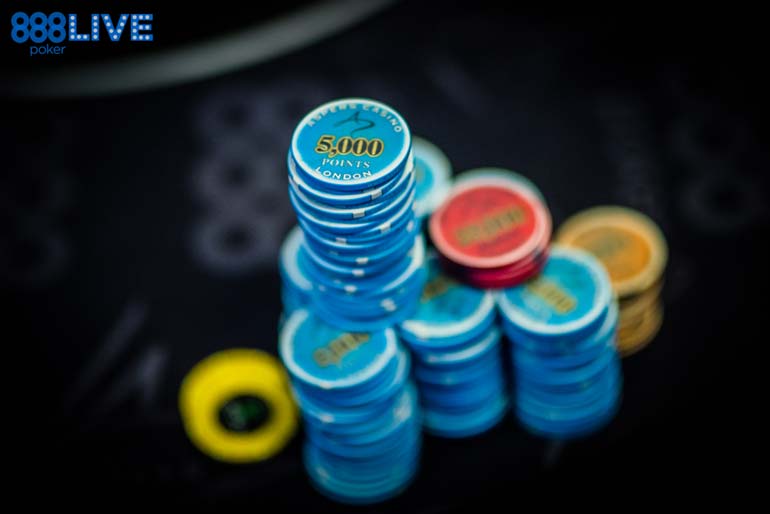In certain situations, we might feel that we know nothing about the type of hand our opponent is holding. That’s never entirely true, however.
By looking at our own cards, we can deduce which cards our opponent is definitely not holding.
We refer to this technique as using blockers.
What Precisely is a Blocker Anyway?
As an example, imagine that one of our hole cards is an ace in Hold’em. We know that it is less likely that our opponent holds an ace. There are now only three aces left in the deck.
This scenario is referred to as a blocking effect.
We might say that we “block our opponent’s ace combos” or that we “hold an ace blocker”.
(Note: The term card removal effect is often used interchangeably with the term blockers.)
So, how can we use blockers to improve our decisions at the poker tables?
We’ll consider the following topics.
Blockers: Calculating the Impact

Blockers: Calculating the Impact
Poker players often think in terms of combinations (or combos for short). A combo is one specific way of making a particular holding.
As an example, there are six possible combinations of every pocket pair in Hold’em, including pocket aces. This number can change due to blocker effects.
Let’s see a simple example:
Example: We hold A5s. Our opponent is taking aggressive lines preflop. How many combinations of AA can he have?
For pocket pairs, we can use the following simple formula to calculate the number of available combos.
Number of cards x (number of cards - 1)
------------------------------------------------------ = number of pocket pair combos
2
So, originally there would have been 4 aces in the deck. So (4 x 3) / 2 = 6 combos. But now there are only 3 aces left in the deck:
There are (3 x 2) / 2 = 3 combos of AA left in the deck.
In other words, by holding just one of the Aces, we have halved the number of AA combos our opponent can hold.
- Example: We hold A5s. Our opponent is taking aggressive lines preflop. How many combinations of AK can he have?
Calculating unpaired hands is even easier.
Number of first card x number of second card = number of unpaired hand combos
Ordinarily, there are 4 x 4 = 16 combos of AK since there are four of each card. If we hold A5s, there are now only 3 x 4 = 12 combos of AK. There are now only three aces left in the deck that our opponent might hold.
Using Blockers Preflop
A typical application of blockers is three-betting and four-betting as a preflop bluff in No-Limit Hold’em.
Let’s see a quick example:
- Example: We open raise on the button to 3bb. The BB 3bets to 10bb. We 4bet bluff to 23bb with KQo.
It should hopefully be clear that KQo is not a value hand in this context. We can consider using the holding as a bluff due to its blocker effect.
Imagine a very straightforward opponent who will shove QQ+ and AK over the top of our preflop 4bet but fold the rest. (This is a very tight opponent, but it keeps the example simple).
Let’s make a quick list of his value combos –
- QQ - 6 combos
- KK - 6 combos
- AA - 6 combos
- AK - 16 combos
That’s a total of 34 combos before considering any blocker effects.
Now let’s relist his combos accounting for the blocker effect from our KQo.
- QQ - 3 combos
- KK - 3 combos
- AA - 6 combos
- AK - 12 combos
Villain now has 24 combos after the blocking effect. Another way of saying this is that Villain is roughly 30% less likely to 5bet jam over the top of our bluff. Remember, we selected a preflop holding with solid blocker effects.
Using Blockers to Bluffcatch
Using Blockers to Bluffcatch
Whenever we are facing a big river bet with a mid-strength hand, we want our opponent to be bluffing as much as possible.
Say we can block his value range (and also avoid blocking his bluffing range). We maximise the chance that he is bluffing in a specific river spot, increasing the profitability of a call.
- Block villain’s value betting range
- Avoid blocking his bluffing range
A simple example is as follows -
Board: T♣ 7♣ 4♦2♠3♣
On a straightforward level, we should notice two things about this runout.
- The strongest value hand is the club flush.
- There many busted straight draws around the T7 region (e.g., J9) that our opponent might use to bluff.
Acdecent river bluff-catcher might hold a high club in the hole (such as the Ac). They’ll avoid holding cards that Villain may have in his bluffing range, such as the Jack, Nine or Eight.
Using Blockers to Bluff
Using Blockers to Bluff
Selecting good blockers for bluffing is like selecting good bluff-catchers.
We want our opponent’s folding range to be as wide as possible and his calling/raising range to be as narrow as possible.
- Avoid blocking Villain’s folding range
- Block Villain’s calling/raising range
Here is a simple example using the same board texture as above.:
Board: T♣ 7♣ 4♦2♠3♣
It might be helpful if we hold a club in our hand. It blocks some of our opponents’ flush combos. We don’t necessarily want to hold cards that block our opponents busted straight draws - such as an eight, nine or jack. These are the hands he is folding.
Note that the principles are similar whether we are bluffing or bluff catching.
- We want to block Villain’s strong hands.
- We want to avoid blocking Villain’s weak holdings.
Blockers in Other Variants
One of the most commonly cited examples of blockers is holding the nut flush blocker in PLO (Pot Limit Omaha).
This factor is especially crucial in a game like PLO, where opponents may be unwilling to stack off with anything but the nuts.
Imagine the following river scenario in PLO:
Board: K♥Q♥8♣5v 4♥
Our hand: A♥T♣J♣2♦
We had some straight draws on the flop and turn, but everything bricked. But we know that our opponent does not have the nut flush.
We have the ace of hearts blocker.
Our opponent might be capable of laying down the second nut flush facing a river jam in an extreme situation. If true, it means we’d be generating 100% folds when bluffing the river in this scenario.
Of course, many players might still have a calling range. But we’d likely get more folds than usual with a bluff here due to the blocker effect.
Blockers: FAQ
Q: Should I always have a blocker when 4bet bluffing preflop?
- A: Not necessarily. If our opponent is folding more than a specific frequency (usually 60% of the time or more), it becomes profitable to 4bet bluff with any 2 cards. Holding good blockers will usually mean the bluff works more often. But it’s not necessarily a requirement for the bluff to be profitable.
Q: What about blockers on the flop and turn?
- A: Blockers have a role in correct flop and turn play also. The effect of this is typically so small. There are usually more essential variables to be focusing on, such as the type of opponent we are facing.
Q: Are blockers the most crucial factor when deciding whether to bluff-catch the river?
A: In theory, yes. But in practice, it’s an entirely different story. Looking at blockers implies that the decision is exceptionally close and that our opponent is playing an optimal game. In practice, many opponents will either be bluffing significantly too often or nowhere near enough. It’s a mistake to focus too much on blockers when we can profitably call or fold all our bluff catchers when our opponent is playing incorrectly.
Q: Can we figure out which blockers are good purely by looking at the board?
- A: No, we need to look at the action also. For example, we might block possible flushes. But this is not useful if our opponent would have played his flushes in a completely different way. We need to understand our opponents range well to begin assuming which blockers are good or bad.
Q: How critical are blockers overall?
- A: Blockers are less crucial than players sometimes make out. While they are a helpful theory concept, there are other more important things to consider in most situations. Blockers are often just a tiny part of the bigger picture.
Focusing too much on small details like blockers might cause players to miss what is most essential in a given situation.


